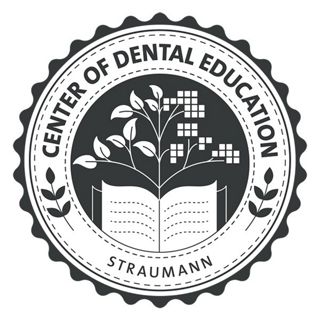Introduction
Evidence has shown that there is no requirement for complete socket healing, and both tooth extraction and implant insertion can be accomplished in a single surgical session2,3. As for the scientific evidence on the posterior area, Hayacibara et al. indicated that, when carefully planned, executed, and monitored, immediate implants of mandibular molars are a feasible surgical treatment with a high success rate4.
The following case report presents the treatment of a patient with immediate implant placement and bone grafting in a lower molar site. The Straumann® BLX with Roxolid® material and SLActive® surface was chosen for this situation as it allows us to achieve an optimal primary stability and predictable outcomes, enabling confidence for early implant insertion.
Initial situation
A healthy 48-year-old female non-smoker with no medication or allergies came to our clinic reporting pain in the lower right first molar. She stated that she had had this condition for the past few weeks, and that it was not improving and was aggravated by chewing. Since this situation was affecting her quality of life as she was not able to eat properly, her main wish was to have an immediate solution that would improve her quality of life.
The extraoral examination showed a medium smile line. The intraoral examination revealed a coronal fracture on tooth #46 with a buccolingual crack line involving the pulp horn extending below the alveolar bone level. The tooth was painful to percussion and did not exhibit mobility. No caries or restoration was present (Fig. 1). Periodontal probing revealed deep pockets on the buccal and lingual sides of #46.
The radiographic assessment confirmed the fracture line below the crest of the alveolar bone on #46. The prognosis was not favorable.
The SAC classification in implant dentistry was used to evaluate the degree of complexity and risk concerned with implant-related rehabilitation. Regarding the surgical and prosthodontic classification, the patient was considered complex and advanced, respectively (Fig. 3).
Treatment planning
Following the clinical and radiographic assessments, and considering the patient's primary request, an atraumatic extraction of #46 and immediate implant placement and bone grafting in a lower molar site were planned. The patient agreed with this alternative after a detailed discussion of the different treatment options.
As a result, the treatment workflow contained the following steps:
- Multi-rooted molar section prior to extraction to allow elevation and removal of individual roots.
- Selection of implant design to ensure primary stability.
- Selection of appropriate implant diameter to ensure space for bone grafting.
- Straumann® BLX SLActive® Roxolid® implant placement.
- Surrounding gaps filled with xenograft.
- Temporary crown delivery after implant insertion.
- Final screw-retained zirconia crown delivery 4 months after surgery.

A Center of Dental Education (CoDE) is part of a group of independent dental centers all over the world that offer excellence in oral healthcare by providing the most advanced treatment procedures based on the best available literature and the latest technology. CoDEs are where science meets practice in a real-world clinical environment.
Surgical procedure
The local anesthetic agent (2% lidocaine and 1:100,000 epinephrine) was administrated to induce the block of the right inferior alveolar and lingual nerve. Since the preservation of alveolar bone is critical to the success of immediate implants, the tooth was separated, luxated with extreme care and without excessive force, and then atraumatically extracted to avoid deformation at the drilling path. The socket walls were intact and carefully debrided to eliminate any granulation tissue using a serrated excavator and rinsed with a sterile saline solution (Fig. 4).
The Straumann® Modular Cassette was used to prepare the implant bed. The preparation started with the pilot drill (∅ 2.2 mm) to full implant length. Next, a sequence of drills with increasing diameters, drill nos. 3 ∅ 3.2 mm, 4 ∅ 3.5 mm, and 5 ∅ 3.7 mm (recommended as the final drill for immediate placement) were used in a clockwise rotation with intermittent drilling and cooling with pre-cooled (5°C) sterile saline solution (Fig. 5). The speed did not exceed 800 rpm.
Once the site was prepared, the Straumann® BLX implant ∅ 5.0 mm SLActive® 12 mm, Roxolid® was removed from its holder (Fig. 6) and placed using the handpiece without exceeding the manufacturer's recommended maximum speed of 15 rpm (Fig. 7).
The primary stability of the implant was achieved by reaching a minimum torque resistance of 35 Ncm. A temporary WB abutment was customized and individualized for a proper occlusal relationship (Fig. 8).
Due to the immediate insertion of the implant, gaps remained between the implant and the socket walls since no implant will match the anatomical shape of the extracted tooth. For that reason, a xenograft was packed around the implant to fill the gaps (Fig. 9). The area was covered with a resorbable membrane. The implant connection was then cleaned. The proper seating of the provisional screw-retained crown was checked and placed prior to wound closure (Fig. 10). The temporary restoration was out of occlusion.
The patient had regular check-ups following the implant placement, and no discomfort or infection was observed. After two weeks, the suture was removed, and the healing was uneventful.
Prosthetic procedure
Four months later, the patient was recalled for the definitive prosthetic procedures. A scanbody was placed in position for digital impression, and the definitive screw-retained zirconia crown was fabricated in the laboratory (Figs. 11,12).
The definitive crown was placed on the implant, and the screw was tightened to 35 Ncm (Fig. 13). The occlusion was checked, and appropriate contacts were confirmed using dental floss. Oral hygiene instructions were given, and a recall schedule was established with the patient.
At the four-month recall, the implant remained biologically stable. The clinical evaluation revealed an adequate emergence profile with sufficient soft mucosal thickness and an adequate amount of keratinized mucosa width. The radiological evaluation showed a stable bone level (Figs. 14,15).
Treatment outcomes
Through an immediate implant placement, a remarkable esthetic outcome and soft and hard tissue stability were obtained. During her last follow-up visit the patient stated: “Even though I had to lose my tooth, I was very relieved to know that I could have a provisional tooth from the very beginning. My new tooth looks and feels very natural, I am very happy with the results.”
Author’s testimonial
“Immediate loading in molar sites requires two critical elements: intact socket walls and optimal initial stability. These factors enable the soft-tissue architecture to be preserved with a reduced number of surgical procedures, resulting in fewer clinic visits and thus better patient acceptance due to overall shorter treatment times.”

